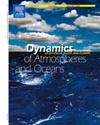CFSv2 模型中厄尔尼诺/南方涛动与印度夏季季风关系密切的奇特案例
IF 1.9
4区 地球科学
Q2 GEOCHEMISTRY & GEOPHYSICS
引用次数: 0
摘要
要确定预测像气候这样的非线性系统的不确定性,必须进行集合预测。虽然集合平均值通常用于表示平均状态和诊断物理机制,但它们可能导致信息丢失和对模式特征的不准确评估。在此,我们重点介绍气候预测系统版本 2(CFSv2)季节性后报中的一个有趣案例。虽然所有集合成员经常在特定季节预测的厄尔尼诺南方涛动(ENSO)的符号上达成一致,但非 ENSO 气候作用力虽然存在于一些单个成员中,但却不尽相同。因此,集合平均值保留了厄尔尼诺/南方涛动异常,同时减弱了非厄尔尼诺/南方涛动信号。厄尔尼诺/南方涛动和非厄尔尼诺/南方涛动信号之间的这种差异对水汽辐合和印度夏季季风降雨量(ISMR)产生了重大影响。厄尔尼诺/南方涛动对季节预测的更大影响增加了集合平均季节后报中厄尔尼诺/南方涛动与印度夏季季风降水的相关性。因此,ENSO-ISMR 关系中的这种差异并不存在于作为独立实现的单个集合成员中,也不存在于作为独立实现的集合成员中。因此,在评估集合均值预测中的远距离联系物理机制时应充分注意,由于不同影响的建设性或破坏性叠加,集合均值预测往往会出现偏差。本文章由计算机程序翻译,如有差异,请以英文原文为准。
The curious case of a strong relationship between ENSO and Indian summer monsoon in CFSv2 model
An ensemble of forecasts is necessary to identify the uncertainty in predicting a non-linear system like climate. While ensemble averages are often used to represent the mean state and diagnose physical mechanisms, they can lead to information loss and inaccurate assessment of the model’s characteristics. Here, we highlight an intriguing case in the seasonal hindcasts of the Climate Forecast System version 2 (CFSv2). While all ensemble members often agree on the sign of predicted El Niño Southern Oscillation (ENSO) for a particular season, non-ENSO climate forcings, although present in some of the individual members, are disparate. As a result, an ensemble mean retains ENSO anomalies while diminishing non-ENSO signals. This difference between ENSO and non-ENSO signals significantly influences moisture convergence and Indian summer monsoon rainfall (ISMR). This stronger influence of ENSO on seasonal predictions increases ENSO–ISMR correlation in ensemble mean seasonal hindcasts. Thus, this discrepancy in the ENSO–ISMR relationship is not present in the individual ensemble members, considered individually or together (without averaging) as independent realizations. Therefore, adequate care should be taken while evaluating physical mechanisms of teleconnection in ensemble mean predictions that can often be skewed due to constructive or destructive superposition of different impacts.
求助全文
通过发布文献求助,成功后即可免费获取论文全文。
去求助
来源期刊

Dynamics of Atmospheres and Oceans
地学-地球化学与地球物理
CiteScore
3.10
自引率
5.90%
发文量
43
审稿时长
>12 weeks
期刊介绍:
Dynamics of Atmospheres and Oceans is an international journal for research related to the dynamical and physical processes governing atmospheres, oceans and climate.
Authors are invited to submit articles, short contributions or scholarly reviews in the following areas:
•Dynamic meteorology
•Physical oceanography
•Geophysical fluid dynamics
•Climate variability and climate change
•Atmosphere-ocean-biosphere-cryosphere interactions
•Prediction and predictability
•Scale interactions
Papers of theoretical, computational, experimental and observational investigations are invited, particularly those that explore the fundamental nature - or bring together the interdisciplinary and multidisciplinary aspects - of dynamical and physical processes at all scales. Papers that explore air-sea interactions and the coupling between atmospheres, oceans, and other components of the climate system are particularly welcome.
 求助内容:
求助内容: 应助结果提醒方式:
应助结果提醒方式:


